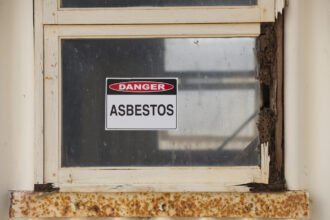Continuing care retirement communities (CCRCs) are experiencing a boom in residency, as more seniors with diverse needs prefer the residential alternative of an independent living unit. CCRC contracts often include health care access that a rental or ownership community would not, such as skilled nursing care. As resident health and social needs change, so must the services. Existing residential and health care services include:
- Access to prescription drug and rehabilitation services.
- Access to a physician and skilled nursing facility care for those who become briefly ill or need long-term care. Such care may be given through an on-site or off-site nursing facility affiliated with the CCRC. Caregivers at the CCRC do provide similar care as assisted living communities if needed, such as grooming, dressing, bathing and other daily living requirements. Yet, on-site care typically doesn’t include primary care.
- Independent housing which includes meals, activities, transportation, housekeeping and maintenance.
CCRCs are valued by seniors for the benefits of independent living, but few address the full spectrum of health care necessary for many seniors. With the growing rate of CCRCs, many organizations are working with primary care doctors to add primary and other outside care as an internal service. These organizations are faced with challenges, but also with growing success, in an effort to adapt to the changing care needs of seniors. Integrating a Primary Care Model Selecting a primary care model may be a risky choice for an organization uncertain if it is economically feasible. It largely depends on whether the primary care service will be for-profit and whether clinicians will be employed or become partners in the corporation. Models that are residential may pair successfully with a physician or practice. However, a cooperative partnership or employed clinician could be a better fit due to existing financial models that are more secure with risk-sharing and cost-savings. Success has been found with practices that pair collaboratively with one or more CCRCs in a team-based strategy to meet care needs. Teams often must travel from site to site to break even, but it’s a model that’s working and being considered nationwide. In 2013, the Medicare Residential Care Coordination Act was introduced, which allows five states to construct and implement new models that feature health care and housing benefits for eligible CCRC housing members enrolled in Medicare Part A and B. This bill enables models to be created that would lower the total cost of care for seniors, decrease trips to the hospital and more, by integrating primary and post-acute care services into existing models. Seniors wouldn’t have to travel off campus to receive medical care. Salaried primary care physicians would lead the health care team, traveling from site to site. Jeff Petty, CEO of Wesley Enhanced Living, is a founder of such a primary care model, called WELShift. Often, no doctor is physically there on-site, but when a doctor is present to attend to patients, “more than 60 percent of hospitalizations were potentially avoidable nationwide,” according to Petty. If a resident has a health care issue in the middle of the night, the patient can’t reach their doctor over the phone and would have to visit the ER or wait to travel to a primary doctor. It could also be the case that the doctor would have a large gap between the patient’s visits, whereas an on-site doctor would be familiar with the patient and be readily accessible. On-Site Peace of Mind Seniors with chronic illnesses need more time per visit that existing health care infrastructures cannot provide. Accessible primary care on campus would solve that problem. More medical resources are consumed and more money spent by seniors than the rest of the population. Therefore, integrating primary care as an on-site service is a viable economic opportunity that benefits senior communities and residents alike. Dr. Stephen C. Schimpff asserts that a senior community can be a model for primary care. He cites a large developer of CCRCs that set the patient number per physician number low at 400 for their primary care physicians. Note that most of these physicians have an average of 2,500 patients under their care. 400 is an ideal number to ensure quality, empathetic and integrative care for geriatric patients. The number of patients is manageable, and overall health care costs are reduced. When a senior couple requires different levels of care, they do not have to be separated. They may receive individualized care only steps away from each other on the same campus, with primary care right there. Integrating primary care into existing health care models is the next phase of CCRC care. It’s a model that can prove cost-effective for both the CCRC and seniors, with the greater reward of allowing seniors to live an independent lifestyle and receive the full spectrum of health care they deserve.






